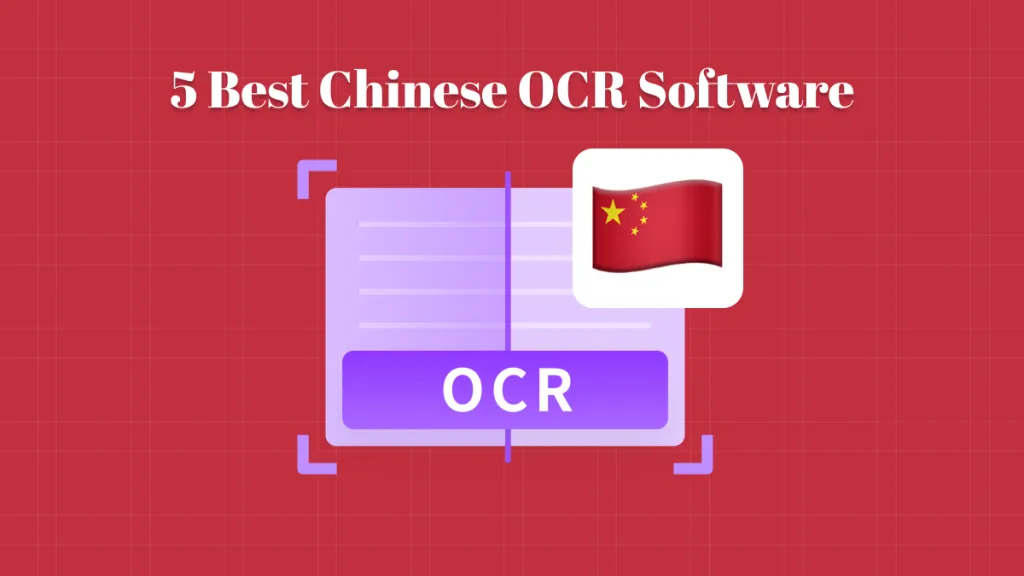Without the correct tool, it is difficult to copy text from a scanned PDF. There are a variety of tools available, which is helpful; nonetheless, it can be challenging to determine which tool will be most effective. This post is for you if you have been continuously trying to find information on how to copy text from scanned PDFs.
We will share 2 different methods to copy text from scanned PDFs, keep reading and we are sure you will find the method you need.
Part 1. How to Copy Text from a Scanned PDF on UPDF? (3 Ways)
With UPDF, you can easily copy text from scanned PDF. Its OCR can help you make your scanned PDF editable so that you can extract text from scanned PDF in seconds. Different from other PDF software, UPDF has an AI integrated which can also help you extract text from scanned PDFs. The good part of the AI feature is that it can help you extract the extract from the scanned PDF with blurred and handwritten texts without any error.
You can download it directly by clicking the download button below and following the below guides to learn how to use these two features.
Windows • macOS • iOS • Android 100% secure
Way 1. Via OCR
You can use OCR in UPDF to extract text from scanned PDFs. Here is the guide.
On desktop
Step 1: Define Document Type
Download and Launch UPDF. You must start by opening a scanned PDF on UPDF and proceed to select the "OCR" in "Tools" from the left column. As the menu pops up, select the option of "Editable PDF", "Text and Pictures Only", "Searchable PDF Only" to meet the needs.
Step 2: Set OCR Properties
Following this, you have to define the "Layout Settings" that you are going to use in OCR. You can also set the layout by clicking on the "Gear" icon. For setting up "Image Resolution," you can choose any particular value from the menu.
Next, you must provide the "Document Language" by selecting any of the 38 languages available in the list. Adjust the "Page Range" if needed.
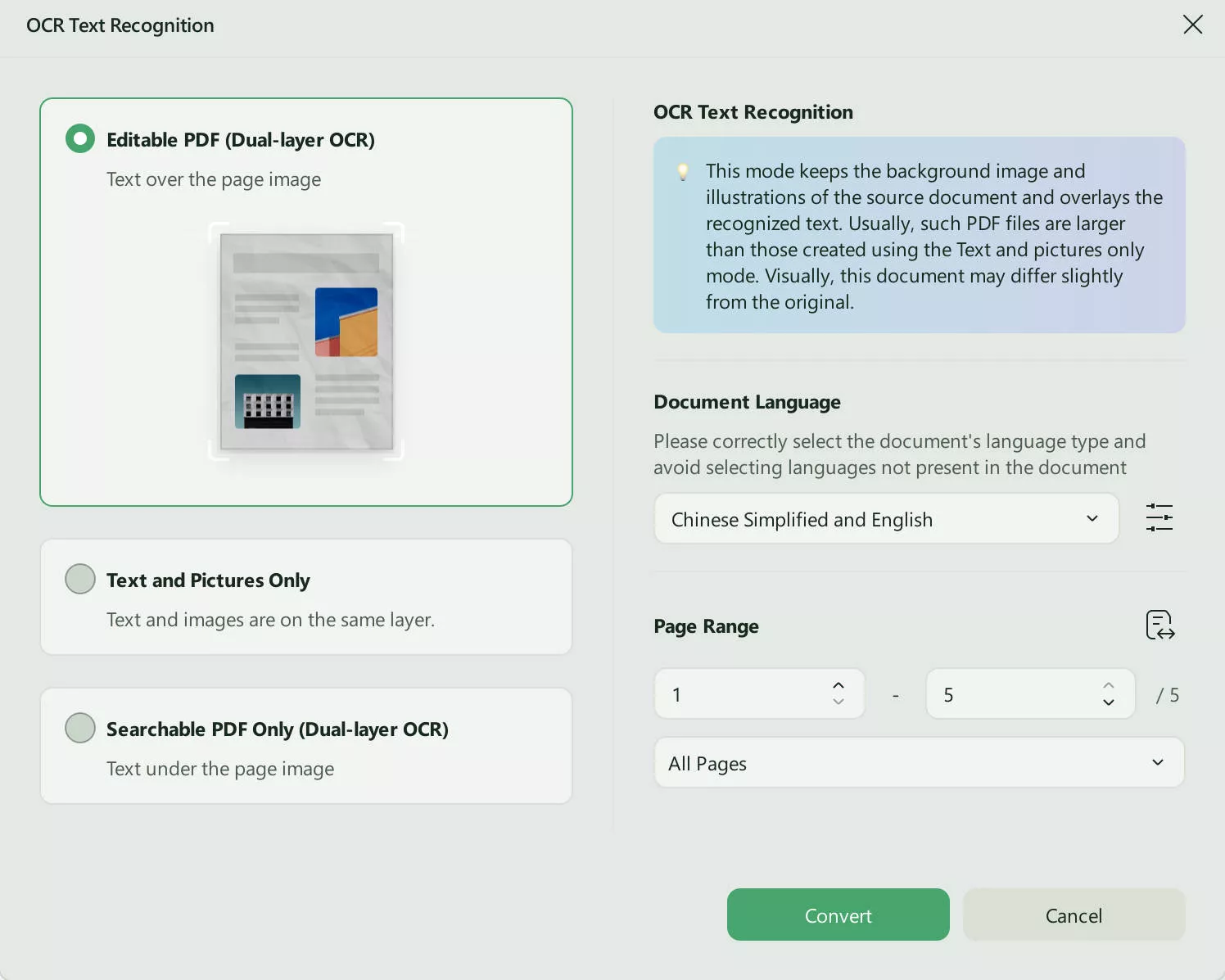
Step 3: Copy and Paste from a Scanned PDF Document
Set the page range of the PDF document on which the OCR function should be applied. As it is done, hit the "Convert" button and continue setting up a location for saving the converted document successfully. Once done, the OCR function starts converting the document within a matter of seconds. You can then easily copy text from scanned PDF after the converted document opens on UPDF.
If you are using the free version of UPDF, you can only experience the OCR feature and cannot copy the text from the OCRed PDF. You can upgrade to pro version at a low price to extract text from scanned PDF.
Video guide on how to OCR PDF with UPDF:
Also Read: How to Copy Text on Screen (For All Platforms)
On mobile
Step 1. Open UPDF on your phone, click the "+" icon to upload your file.
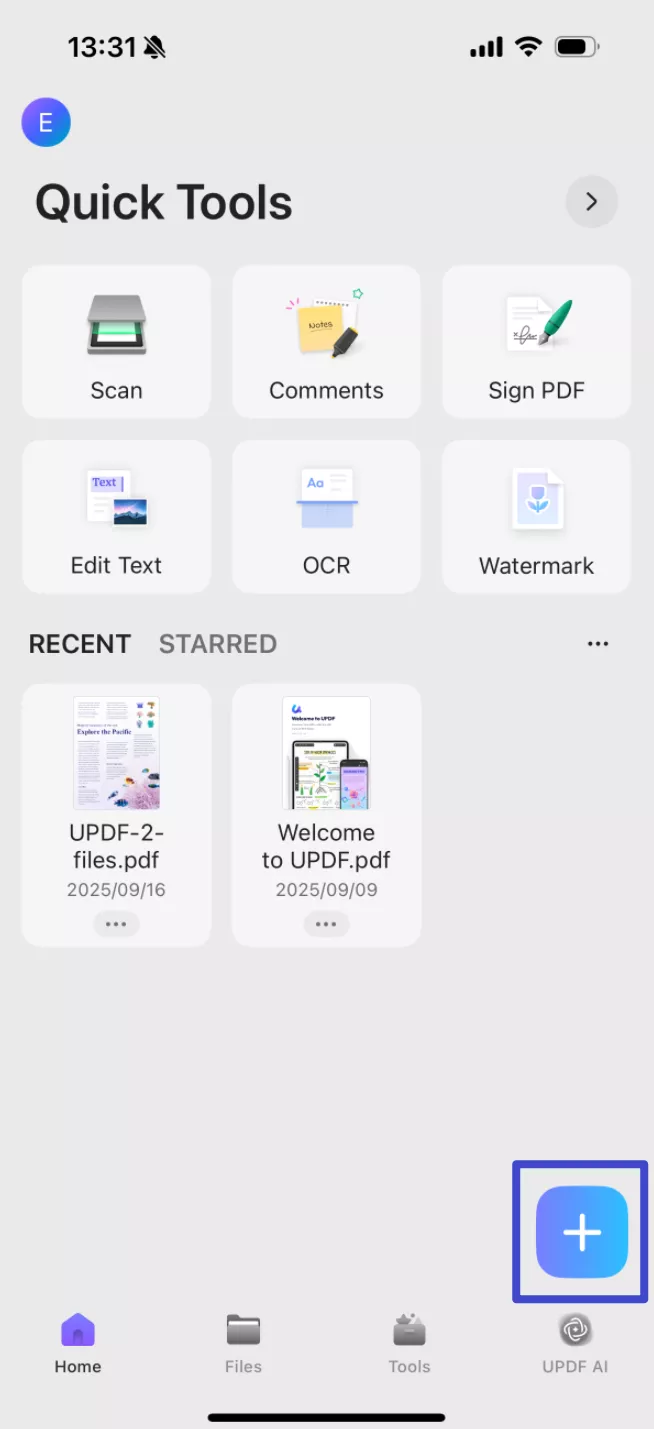
Step 2. Click the "OCR" icon at the bottom, adjust the settings according to your needs, after that, click "Continue", and a OCRed PDF will be saved automatically.
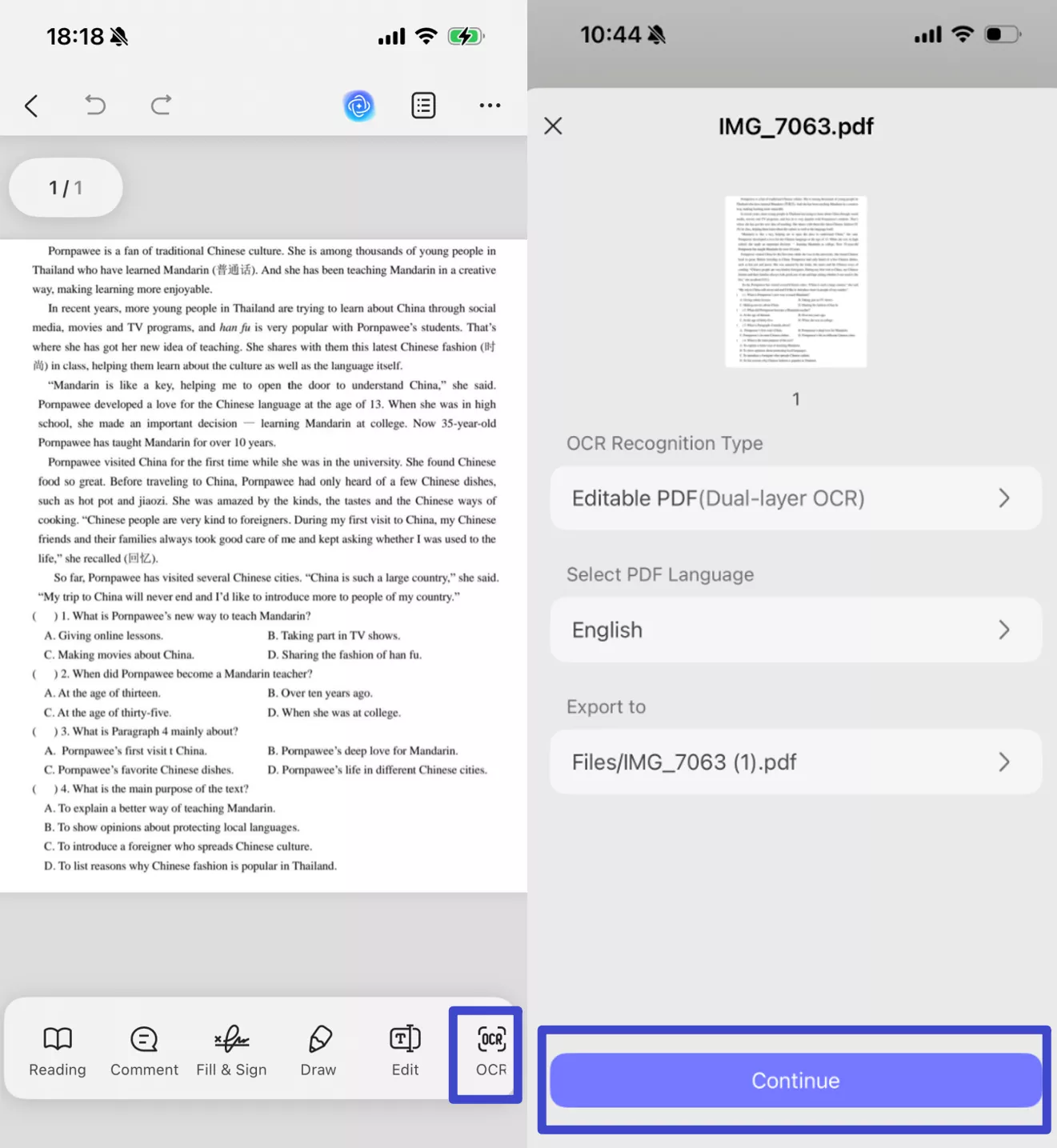
Step 3. Now, click the "Edit" button at the bottom, select the text that you want to copy and choose the "Copy" option.
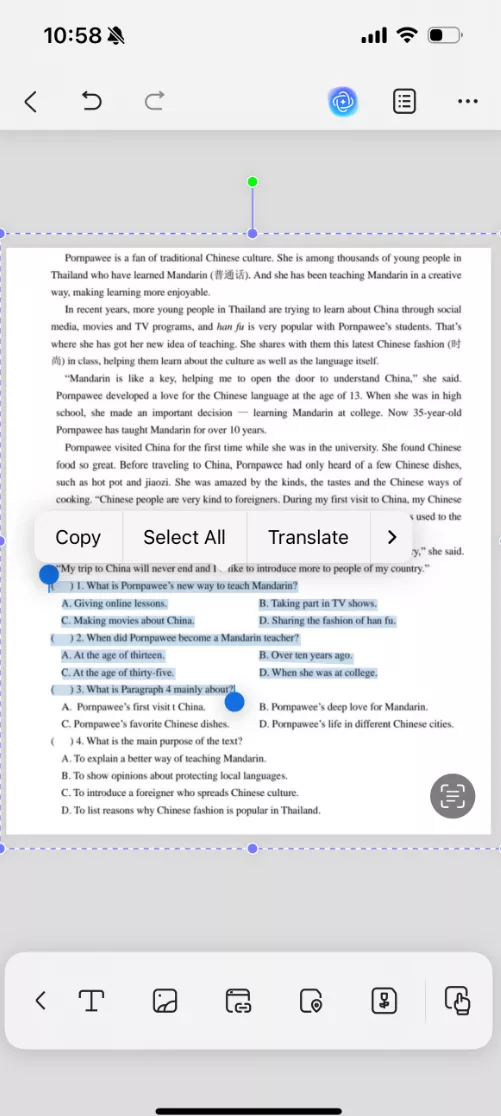
Way 2. Via Screenshot and AI
UPDF AI has one feature called chatting with images. It can help you extract text from images once you upload them. Although your scanned PDF is in PDF format, you can use UPDF's screenshot feature to convert it into the image, and then, extract text from the screenshot with AI. Just follow the below steps.
Step 1. Open the scanned PDF with UPDF, click on the "UPDF AI" icon, switch to "Chat" mode, and click on the "Screenshot" icon. Now, draw your mouse to screenshot the content from the opened scanned PDF.
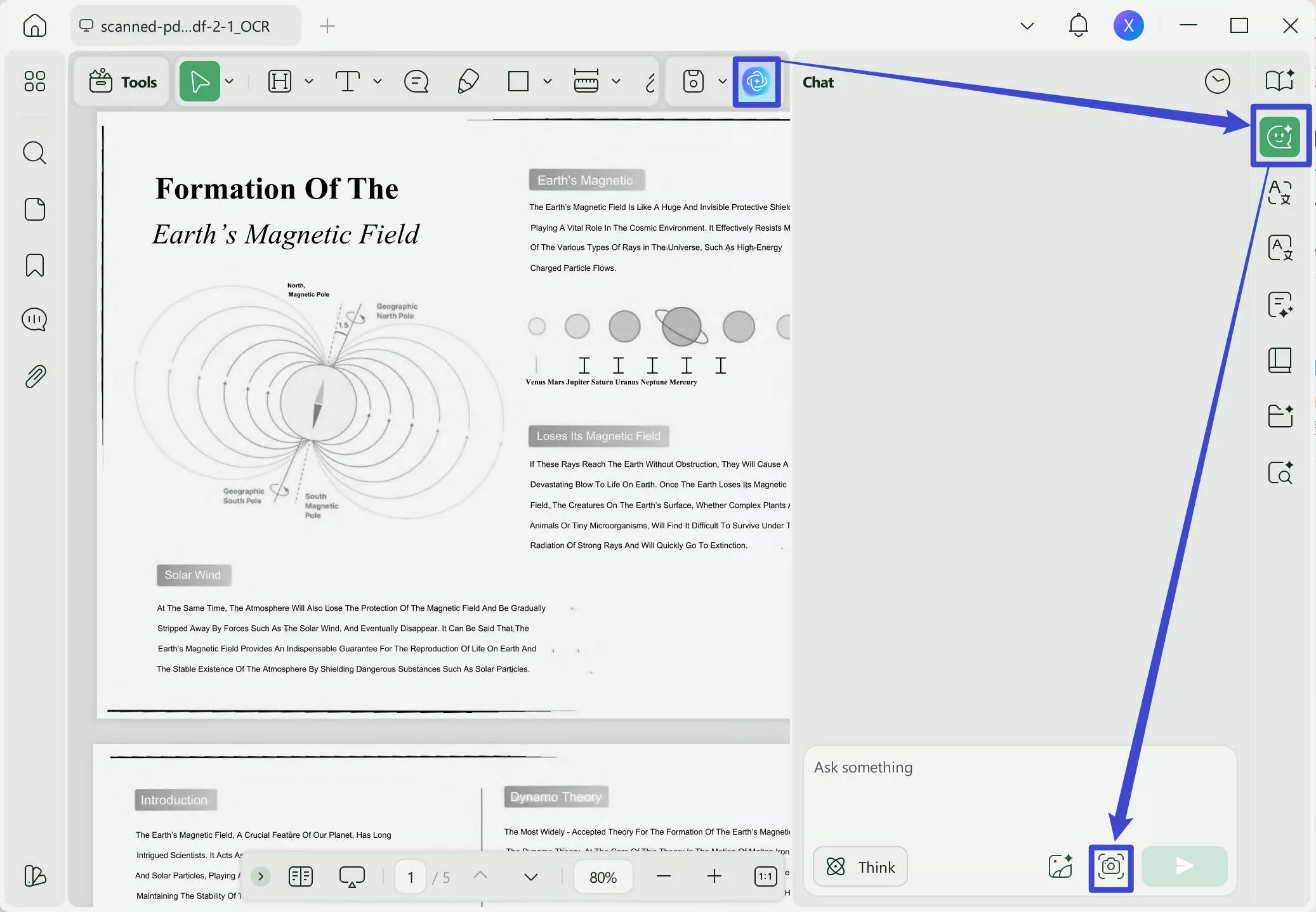
Step 2. Now, the screenshot appears in the message box directly. Enter the prompt "Extract text from image" and press "Enter". The AI will extract text from the image directly. Now, you can click on the "Copy" icon. Now, you copy text from scanned PDF successfully.
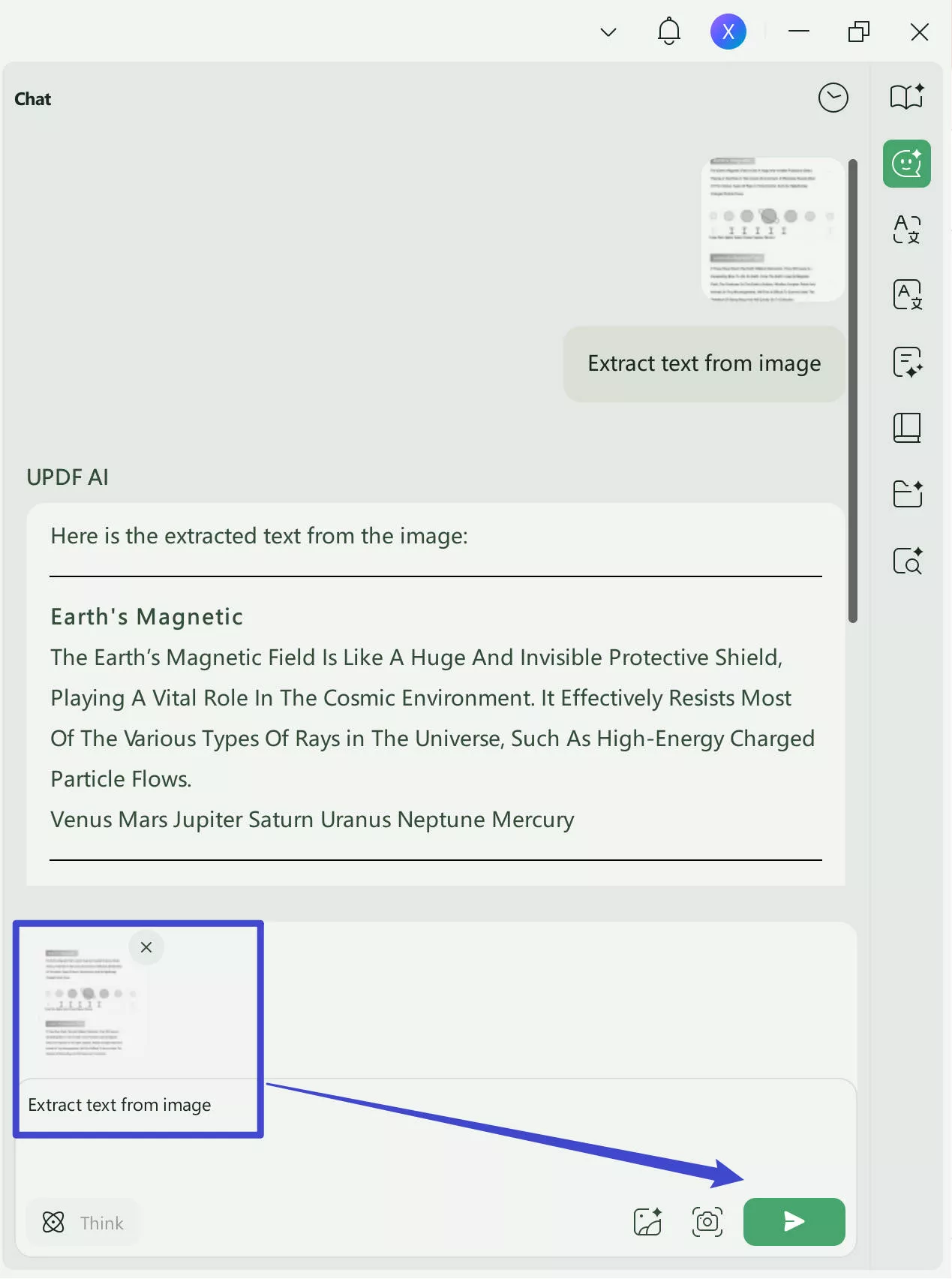
Also Read: Extract Text From PDF With And Without OCR
Way 3. Via Convert and AI
The second method is better to extract part of the content in the scanned PDF. If you need to extract the text from each page, you can use the UPDF's converting feature to convert scanned PDFs to images. And each image will be each page of a scanned PDF, then, use the AI to extract the text from the page you need. Just follow the below guide to learn how to use this method.
Step 1. Open the scanned PDF in the UPDF, click on the "Tools" icon, select the "Image", then, click on the "Apply" and select the folder to save the exported image.
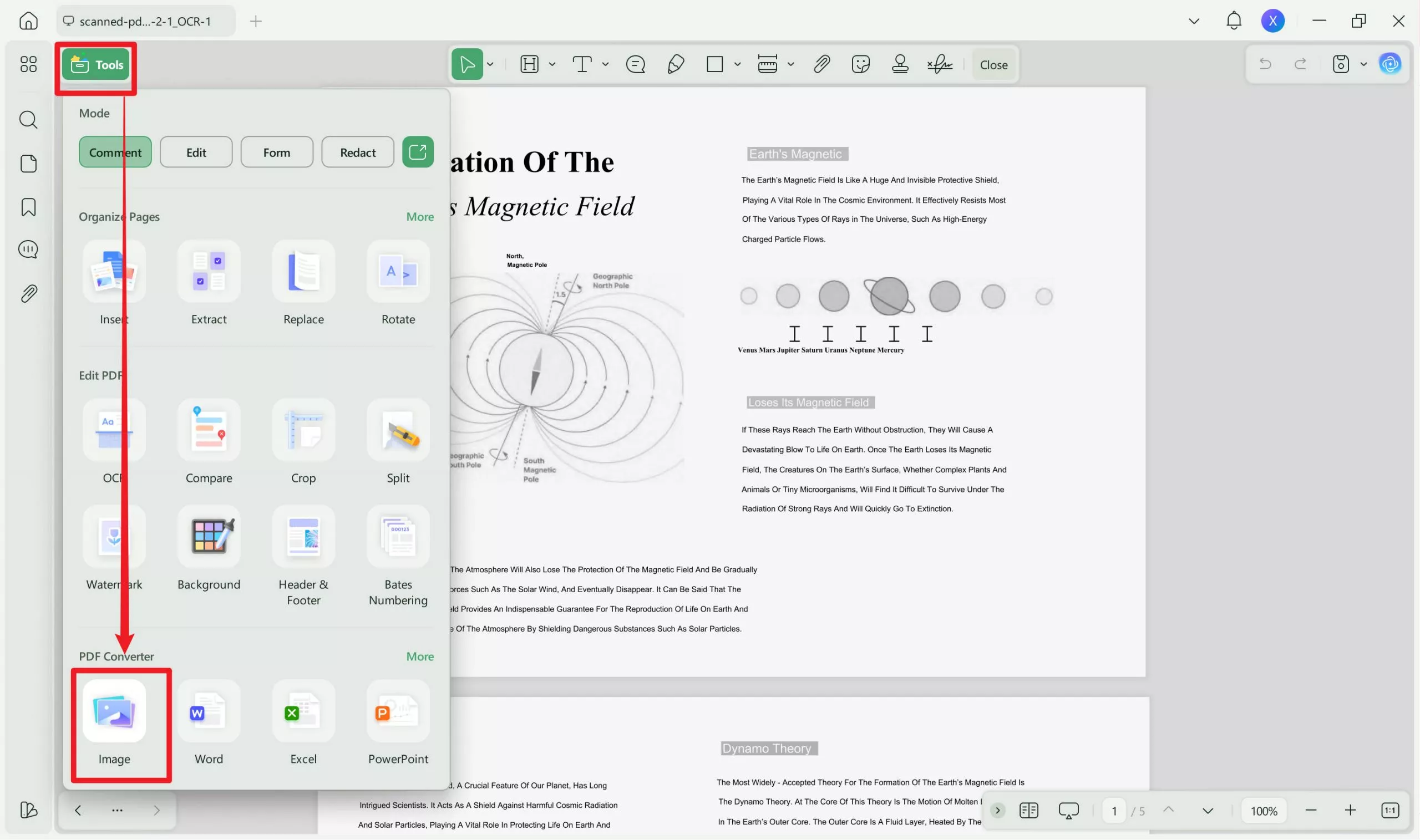
Step 2. Now, you can click on the "UPDF AI", switch to "Chat" mode, select the "Add Image" icon, click to select the exported image on your computer, then, enter the prompt "extract text from image", press enter, and now, your scanned PDF text is extracted, you can copy the content to any place.
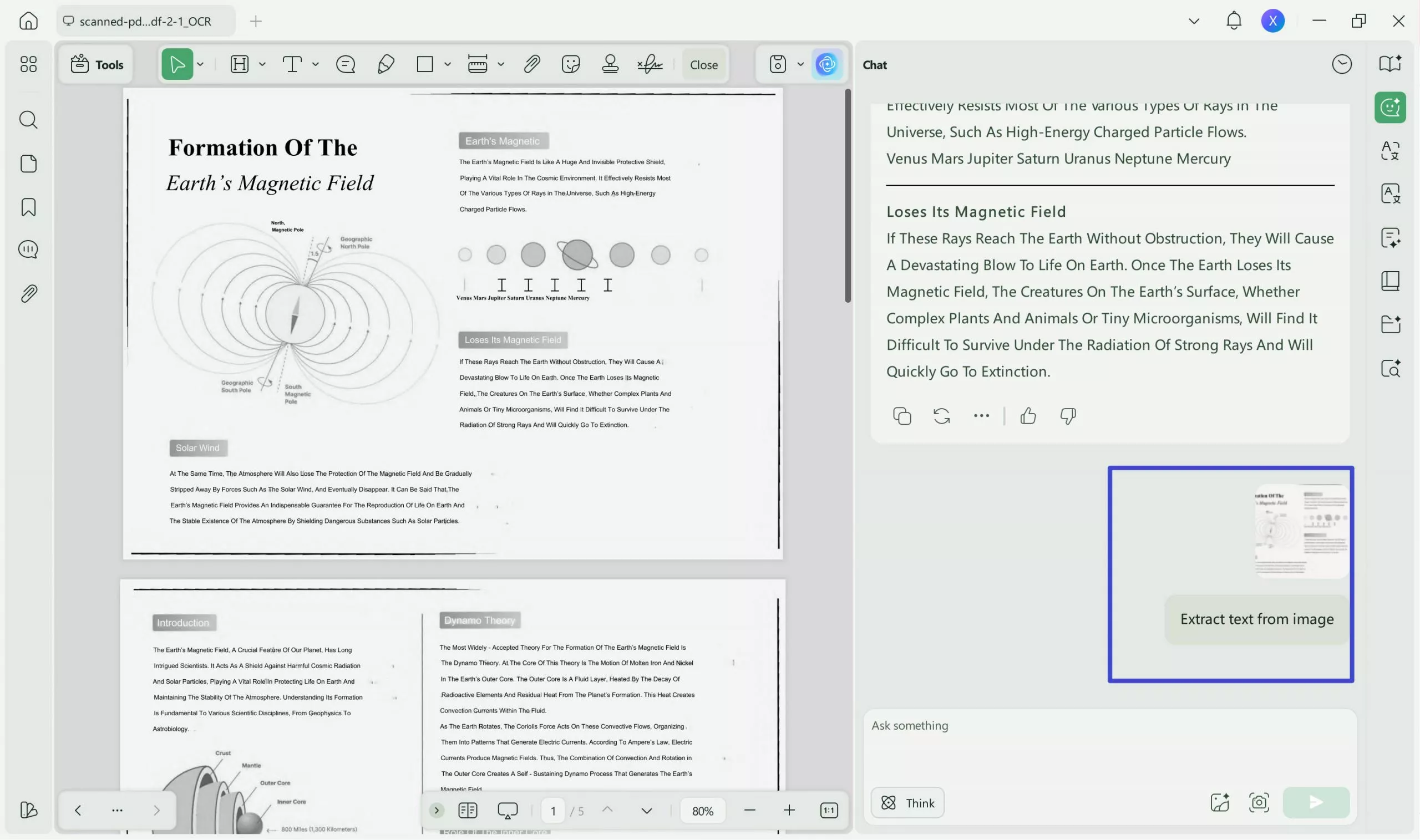
UPDF is not only a tool that can help you copy texts from scanned PDFs but also an all-in-one PDF editor. Want to have an overall understanding of UPDF? You can read this review article from Laptopmedia, or download UPDF via the below button to test it on your own.
Windows • macOS • iOS • Android 100% secure
Here are the most popular features of UPDF:
- The biggest and most recent addition to UPDF is the capability to quickly and easily convert PDF files to a wide variety of different formats. The OCR compatibility is one of the nicest parts of this function because it makes converting scanned PDFs a more competent job.
- It's simple to make changes to the text and graphics in PDF files. You may use it to make changes to existing PDFs or create new ones completely.
- UPDF also excels as an annotation application. It gives you the ability to underline, highlight, strikethrough, or hypertext any paragraph in your PDF file. When you use UPDF, you have access to all the necessary annotation tools to ensure that your colleagues fully understand your thoughts.
- You may easily reorganize and organize your PDF pages without encountering any difficulties if you make use of an efficient organizing option. You have the ability to rotate, rearrange, and reorganize the pages in your PDF.
Also, UPDF can work on Windows, Mac, iOS, Android and Al Assistant can work on Web, Windows, Mac, Android and iOS, allowing you to access all these functionality anytime, anywhere.
Part 2. How to Copy Text from a Scanned PDF Online?
UPDF has an online AI that can also help you copy text from a scanned PDF. However, you need to follow the third method mentioned in part 1 to convert scanned PDF to images, then, use UPDF Online AI to extract text from images. Just click the below button to visit UPDF Online AI and follow the below steps.
Steps: After converting scanned PDF to images, you can click the above button to visit UPDF Online AI, then, click on the "Image" icon to upload the converted image to UPDF AI, enter, the prompt "Extract text from image", click on the "Send" icon. Now, you can copy the extracted text from the scanned PDF.
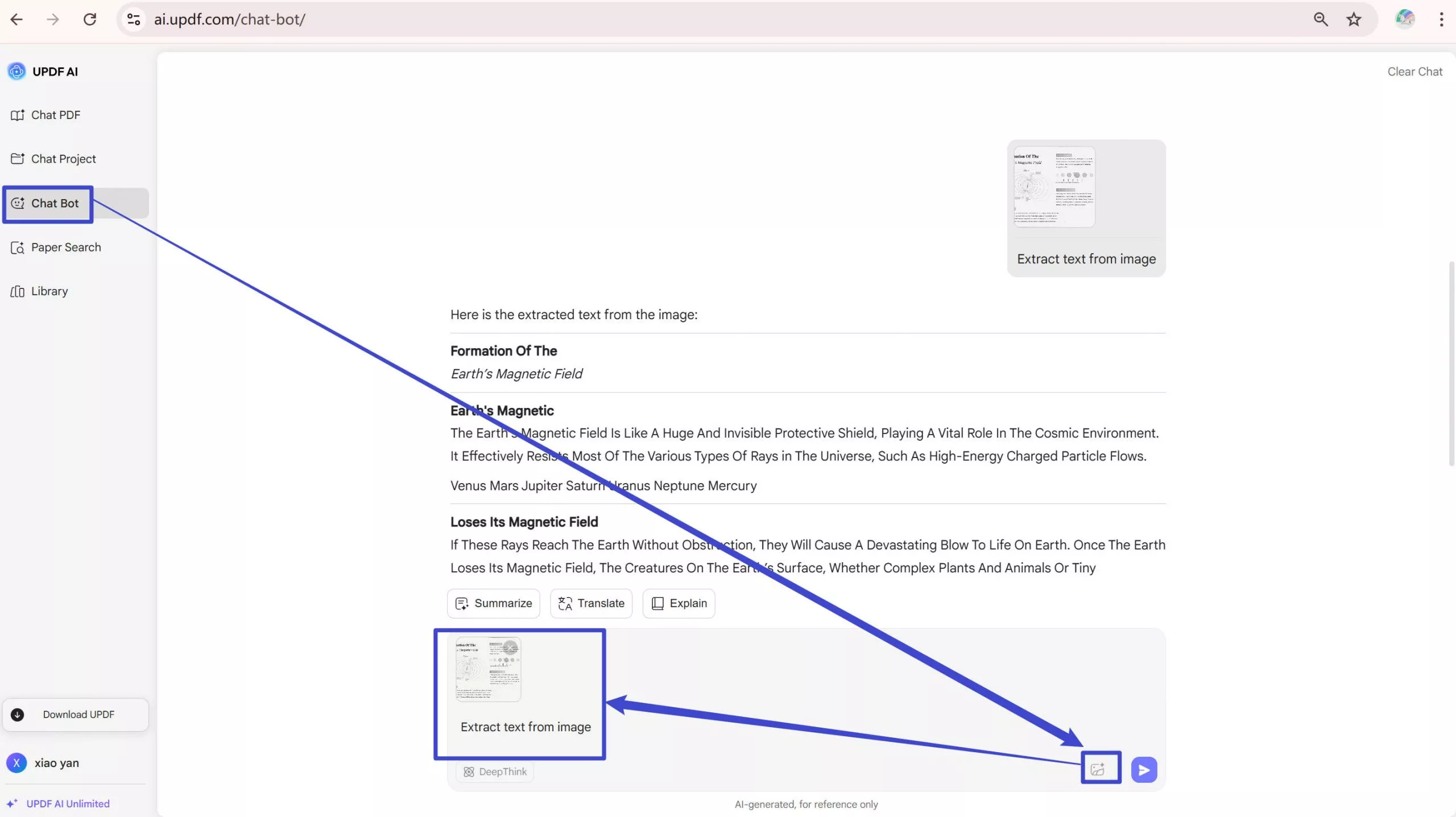
Also Read: How to Copy Text from PDF
Part 3. Why Can't I Copy Text from PDF?
When you try to copy text from a PDF document and paste it into another file, you may find that it doesn't work. This is because PDFs can be created in two different ways - as an image or as a text document - and the way they are created determines whether or not you'll be able to copy text from them.
If the PDF is an image, then it's effectively like a picture, and you won't be able to copy any text from it. The only way to get the text out, in this case, is to use optical character recognition (OCR) software to recognize the characters in the image and convert them into text.
If the PDF is a text document, then it should be possible to copy the text, but it may be protected from being copied by a permissions password. In this case, you'll need to enter the password in order to remove the protection, and then you'll be able to copy the text.
Also Read: Why I Can't Copy Text from PDF? 2 Fixes!
Conclusion
If you want to extract text from scanned PDFs, you can use UPDF. It can help you with OCR PDF which will allow you to select and copy the text. You can also use its AI features to help you extract text from scanned PDFs. UPDF can work on desktop and online, you can choose any method to use. Just download UPDF or visit UPDF Online AI to extract text from scanned PDF now.
Windows • macOS • iOS • Android 100% secure
 UPDF
UPDF
 UPDF for Windows
UPDF for Windows UPDF for Mac
UPDF for Mac UPDF for iPhone/iPad
UPDF for iPhone/iPad UPDF for Android
UPDF for Android UPDF AI Online
UPDF AI Online UPDF Sign
UPDF Sign Edit PDF
Edit PDF Annotate PDF
Annotate PDF Create PDF
Create PDF PDF Form
PDF Form Edit links
Edit links Convert PDF
Convert PDF OCR
OCR PDF to Word
PDF to Word PDF to Image
PDF to Image PDF to Excel
PDF to Excel Organize PDF
Organize PDF Merge PDF
Merge PDF Split PDF
Split PDF Crop PDF
Crop PDF Rotate PDF
Rotate PDF Protect PDF
Protect PDF Sign PDF
Sign PDF Redact PDF
Redact PDF Sanitize PDF
Sanitize PDF Remove Security
Remove Security Read PDF
Read PDF UPDF Cloud
UPDF Cloud Compress PDF
Compress PDF Print PDF
Print PDF Batch Process
Batch Process About UPDF AI
About UPDF AI UPDF AI Solutions
UPDF AI Solutions AI User Guide
AI User Guide FAQ about UPDF AI
FAQ about UPDF AI Summarize PDF
Summarize PDF Translate PDF
Translate PDF Chat with PDF
Chat with PDF Chat with AI
Chat with AI Chat with image
Chat with image PDF to Mind Map
PDF to Mind Map Explain PDF
Explain PDF Scholar Research
Scholar Research Paper Search
Paper Search AI Proofreader
AI Proofreader AI Writer
AI Writer AI Homework Helper
AI Homework Helper AI Quiz Generator
AI Quiz Generator AI Math Solver
AI Math Solver PDF to Word
PDF to Word PDF to Excel
PDF to Excel PDF to PowerPoint
PDF to PowerPoint User Guide
User Guide UPDF Tricks
UPDF Tricks FAQs
FAQs UPDF Reviews
UPDF Reviews Download Center
Download Center Blog
Blog Newsroom
Newsroom Tech Spec
Tech Spec Updates
Updates UPDF vs. Adobe Acrobat
UPDF vs. Adobe Acrobat UPDF vs. Foxit
UPDF vs. Foxit UPDF vs. PDF Expert
UPDF vs. PDF Expert



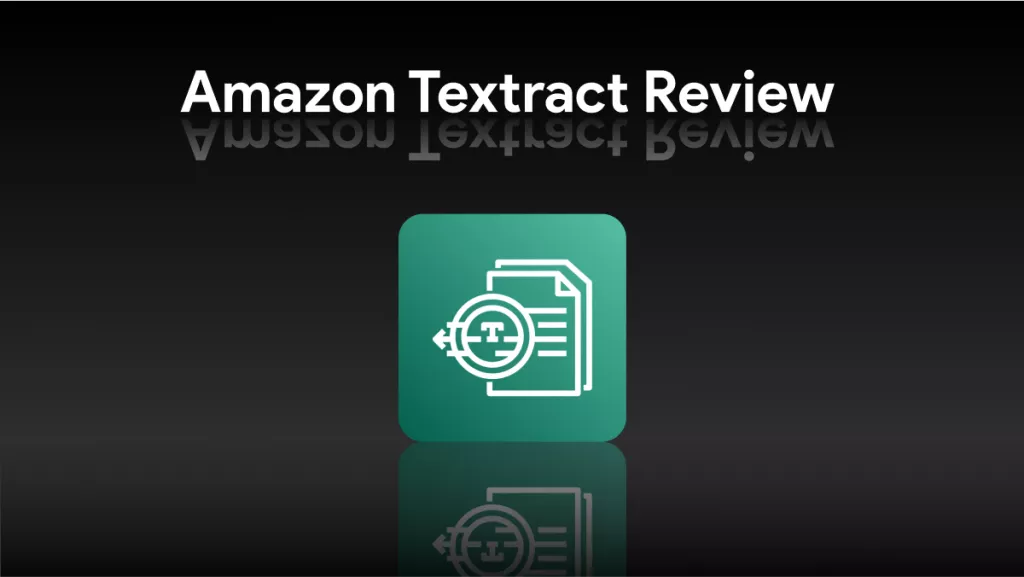


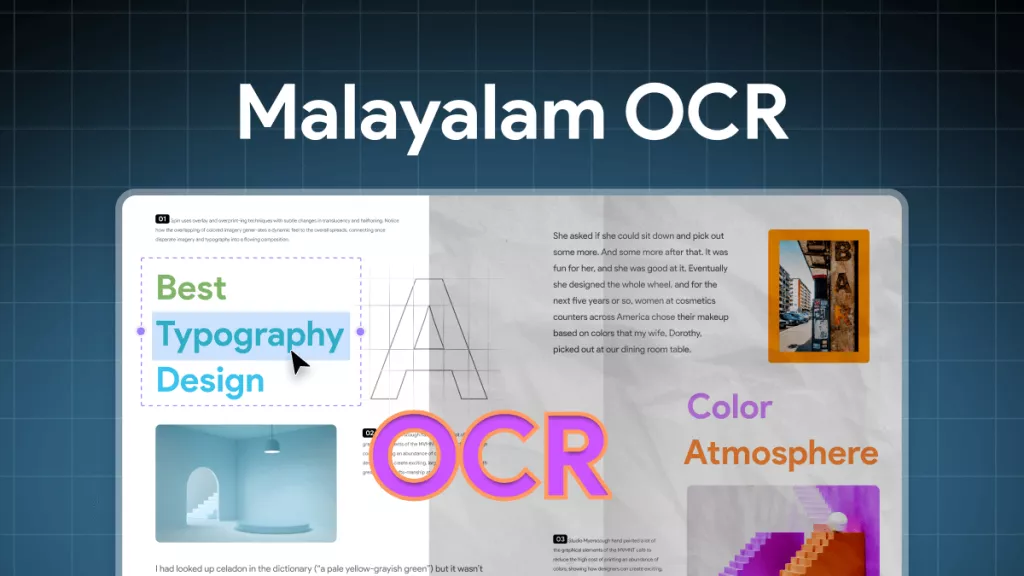
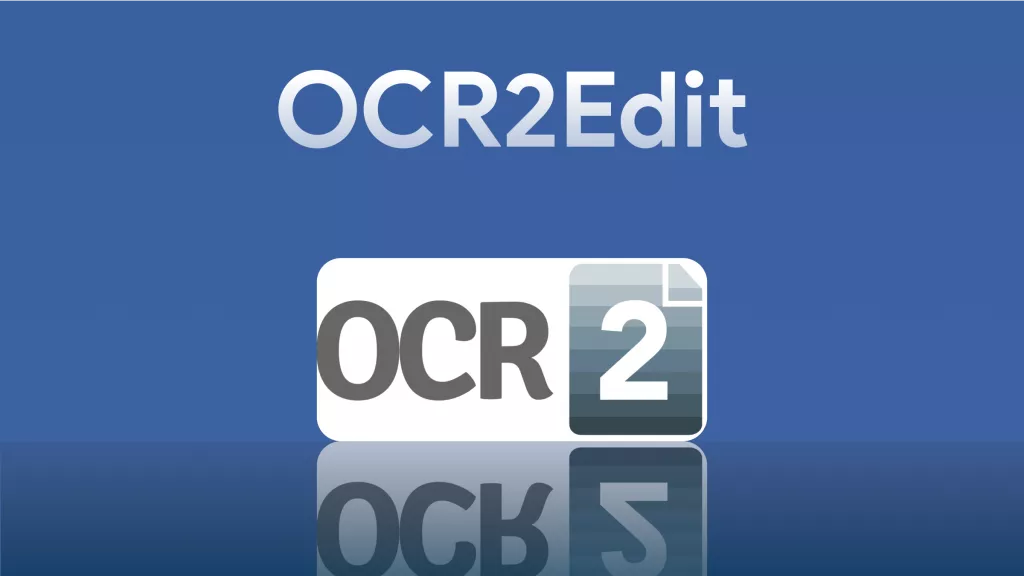
 Engelbert White
Engelbert White 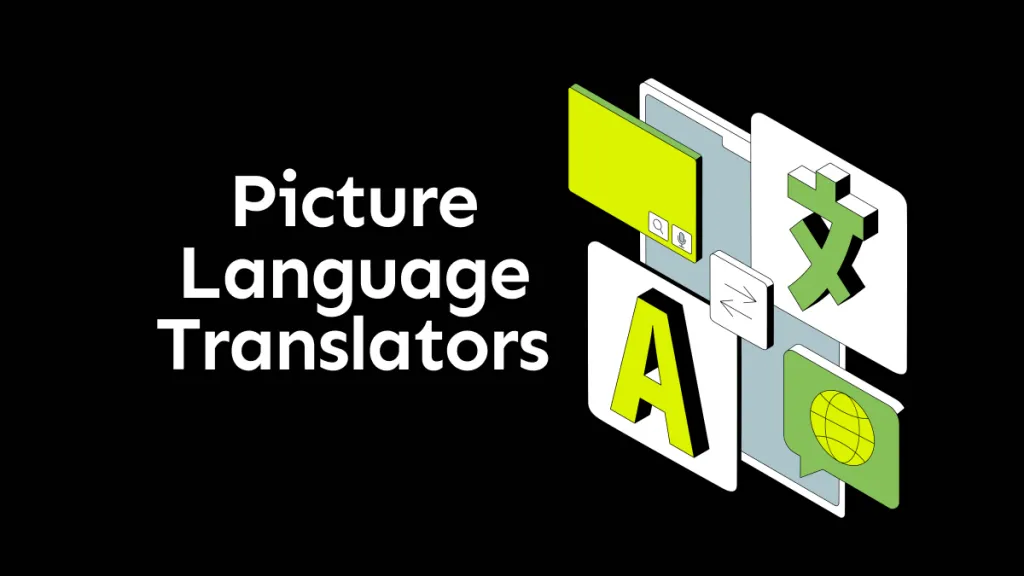
 Enola Davis
Enola Davis 
 Enrica Taylor
Enrica Taylor 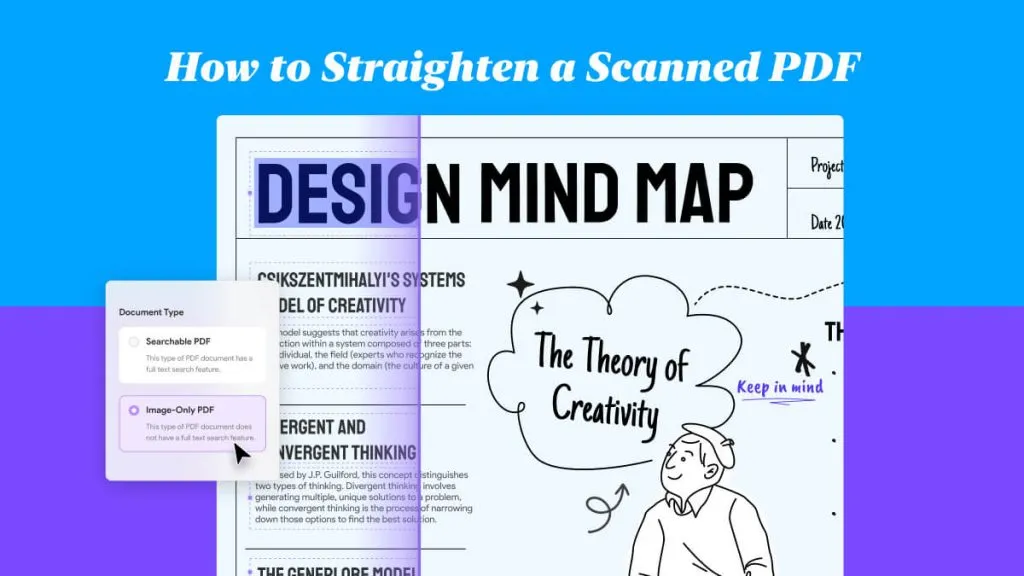
 Lizzy Lozano
Lizzy Lozano 